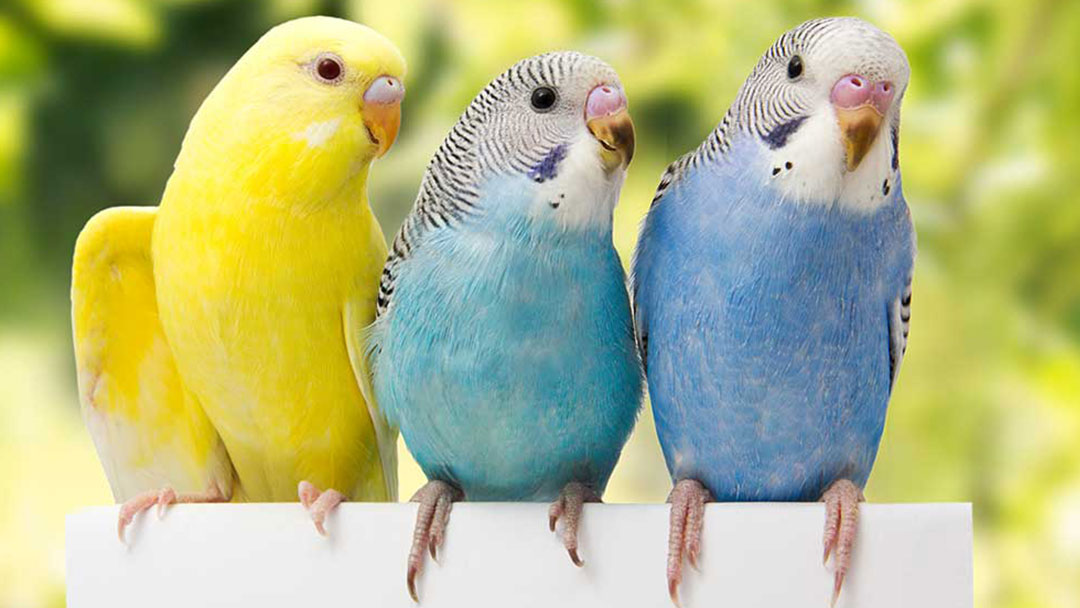
Keeping a Budgerigar
The budgerigar (Melopsittacus undulatus), also known as a parakeet or more commonly a budgie, is the most popular pet bird worldwide.
This small and beautiful bird originates from the drier regions of Australia. Their natural habitats are dry open plains, woodlands bordering waterways and sparsely wooded grasslands.
Selecting a budgie
When looking for a budgie as a family pet, try to choose a young bird. Hand-raised babies often make better pets since they have been completely socialised with humans. Young birds are also more likely to adapt readily to new environments and situations. Older, wild, colony or parent-raised birds may prove difficult to tame and are more suited for aviaries.
Spend some time observing the budgie's behaviour and how it interacts with other birds. A lively, alert bird that is not easily frightened is more likely to be a healthy bird.
After purchasing your new bird, have it examined by your veterinarian.
How do I tell a budgie's sex?
In mature birds, feathering between sexes is similar, but the male’s cere (the featherless area around the nostrils) is rich blue in colour while the female’s cere is pale blue, pinkish-blue or brown. The cere is sometimes crusty in breeding females. The cere colour is not a 100% reliable way to sex birds as it may vary with domestic colour variations. Immature birds are also difficult to sex.
How long do budgies live? What health problems can affect them?
Budgerigars live to about 5 to 8 years of age, though there have been reports of some birds living for 10 to 15 years.
The most common problem affecting older birds is cancer, which is usually seen as lumps developing around the abdomen, but sometimes other signs are due to internal tumours.
They are also susceptible to scaly face mite, bumblefoot, overgrown beaks, psittacosis and other diseases. If your bird is sleeping more than normal or not eating or drinking, these are usually signs of an illness.
What should I feed my budgie?
There are many commercially available complete diets for budgerigars available Seed diets should be supplemented with fresh fruit and vegetables - dark leafy green or yellow vegetables such as spinach and carrot are best. Do not give high-fat seeds such as sunflower seeds, as this can lead to obesity.
A cuttlefish bone should be available in the cage to provide calcium.
Can I train my budgie?
Budgies are generally very social, gentle and affectionate in nature. These loving companions interact well with most members of the family. Budgies are inquisitive, active, free spirits who enjoy flying, playing and chewing. Budgies can be finger trained and some even enjoy head scratches and petting.
Your new bird should be exposed early to different events - young and old people, males and females, other pets, car trips and visits to the veterinarian - to help promote a calm, well-adjusted pet.
Although their voice is not as clear as some of the larger parrots, budgies have the capacity to develop extensive vocabularies. Talking or mimicking requires some effort and training. Males seem to talk better than females although both are capable. One endearing trait of a budgie is its cheerful whistling and chatter.
Non-toxic, bird-safe toys should be provided in the cage for your budgie’s entertainment. Regularly check your bird's toys for damage and repair or replace them as needed.
What kind of cage should I get and how should I set it up?
Many cages that are advertised for budgies are too small, so shop around. The minimum cage size for a single bird is 30cm x 30cm x 60cm, with bar spacing of no more than 1.5cm. The cage should be large enough to allow the birds to fly between perches; it is better for the cage to be longer than it is high to encourage them to fly.
Place perches as far apart as possible to allow your bird to fly between them. Using branches of native trees gives the bird’s feet exercise as it grips perches of differing thickness, as well as something fun to chew on. Do not put sandpaper on the perches as they are ineffective at keeping claws short and can cause infections.
Toys are important to keep your bird amused, but ensure that any metal components are made from stainless steel as other metals can be ingested by the bird and cause poisoning. Paper and cotton can also be risky toy components, depending on your bird's preferences.
Line the floor of the cage with newspaper or paper towelling to allow for easy cleaning and monitoring of your birds' faeces.
Keep the cage in natural light and away from draughts. Exposing your bird to half an hour of direct sunlight a day will help them to synthesise vitamin D. Covering the cage in the evening can help ensure your birds get a full night of sleep.
Keep your bird's cage away from the kitchen if possible - the fumes produced by non-stick (Teflon) cookware are toxic to birds.